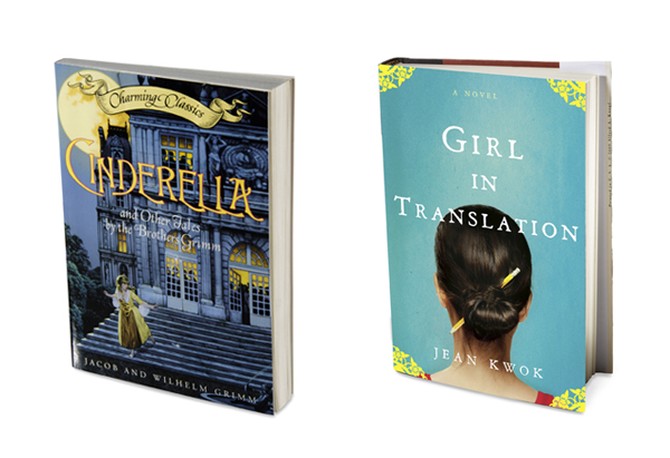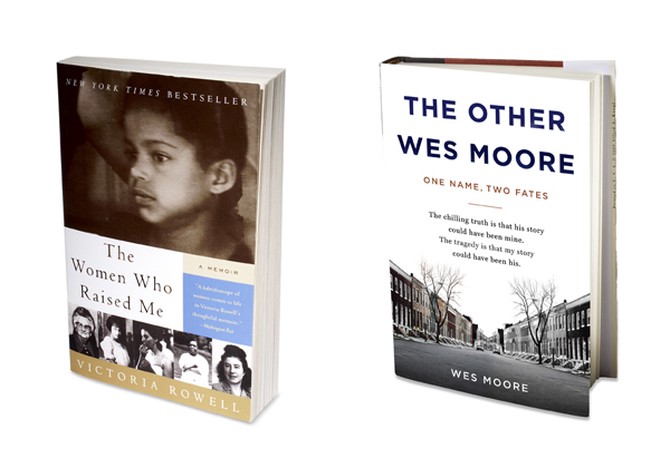5 Books to Watch for This May
Finding a book you love can be a bittersweet experience: How can your next choice ever compare to what you just finished? We revisit the page-turners of the past and recommend titles we're betting will become the stars of the future.

Photo: Jeffrey Westbrook/Studio D
Same Era, Different Points of View
Then: The Help
By Kathryn Stockett
464 pages; Amy Einhorn/Putnam
Practically from the moment it was published in 2009, the reading world embraced Kathryn Stockett's The Help, a debut novel about black maids who finally speak up about their white employers during the civil rights movement. A fixture at the top of most best-seller lists, it became the feel-good book of the year.
Get the reading group guide
Now: Glorious
By Bernice L. McFadden
250 pages; Akashic
Bernice L. McFadden's riveting novel, Glorious, starts in the Jim Crow South and moves to the Harlem Renaissance, and finally to the same civil rights era Stockett chronicled, but it's a grittier, more brutal tale. Easter Bartlett, a young black woman, flees Georgia after seeing too much, including a mob lynching of a pregnant woman. Easter is no victim, though. In Harlem she encounters a world where crowds gather to cheer the "Black Moses" Marcus Garvey and publishers enthuse about the exotic genius of "Negro" writers. Still, it's hardly a postracial paradise. McFadden—in vivid vernacular—brilliantly skewers the vanity of self-congratulatory liberals. A white woman returning from Paris with her black lover gushes, "Before our encounter, I had never even spoken to a Negro. They were invisible to me and now I see them everywhere!" Easter achieves some brief literary fame, but by 1961, she is tired, and battered by stubborn racial attitudes. In confronting one final injustice, she doesn't just survive; she triumphs—gloriously. — Karen Holt
Get the reading group guide
Next: Mother knows best, in China and Jamaica...

Photo: Jeffrey Westbrook/Studio D
Mother Knows Best, in China and Jamaica
Then: The Bonesetter's Daughter
By Amy Tan
400 pages; Ballantine
In 2001 we read Amy Tan's The Bonesetter's Daughter, another of the beloved author's great mother-daughter sagas about the clash of worlds old and new—and the different perspectives that exist within any family.
Now: The Long Song
By Andrea Levy
320 pages; Farrar, Straus & Giroux
Andrea Levy's shimmering new novel The Long Song, set in 19th-century Jamaica, marks a similar coming to terms with the past by women and their children. Writing her memoirs, the elderly "Miss July"—a former slave named for one of the months her mother had been taught to spell—grew up in the great house of a plantation after her mistress plucked her from her mother on a whim. But July's is not the only version of events. There are also frequent entries from her son, Thomas, who had been abandoned by July as an infant; he quarrels with the facts of her possible fictions and questions her memories. Shifting styles of storytelling evoke the voices of Tan's generations. The novel also offers a unique portrayal of an island where a mother's secrets become the history of us all. — Celia McGee
Get the reading group guide
Next: Behind every great author...

Photo: Jeffrey Westbrook/Studio D
Behind Every Great Author...
Then: Véra
By Stacy Schiff
480 pages; Random House
Author Stacy Schiff won the 2000 Pulitzer Prize for her stunning portrayal of the ultimate "writer's wife," Véra Nabokov. You didn't have to be a Lolita scholar to find the twists and turns of this marriage fascinating or to understand the countless ways in which even a gifted writer like Vladimir Nabokov needed all the help he could get.
Get the reading group guide
Now: Sophia Tolstoy
By Alexandra Popoff
368 pages; Free Press
In Sophia Tolstoy, Alexandra Popoff's fascinating biography of the young wife of the brooding Russian author Leo Tolstoy, we get another picture of greatness behind greatness. While Tolstoy's Anna Karenina and War and Peace are universally considered two of the world's most important books, the author himself was conflicted about his artistic responsibility, and tortured about the value of his work—and he was, by any measure, a difficult husband. The 16-years-younger Sophia bore his tantrums, all the while carefully copying his texts to get them ready for publication. She also endured 16 pregnancies, withstood the deaths of several of her children, and put up with Tolstoy's religious rants, with which she vehemently disagreed. Although she became a serious photographer and an activist on behalf of Russia's many poor farmers, when she wrote and tried to publish a frank memoir of her life, she was demonized. Popoff writes that the common wisdom has been that "Tolstoy's martyrdom was suffered at home," by a wife as torturous as the Inquisition. This biography—and the publication of Sophia's long-suppressed memoir later this year—should help set the record straight. — Sara Nelson
Next: Who can resist a happy ending?

Photo: Jeffrey Westbrook/Studio D
Who Can Resist a Happy Ending?
Then: Cinderella
By the Brothers Grimm
224 pages; HarperCollins
While we're supposed to know better than to fall for Cinderella stories about poor girls who make good, triumph over their evil relatives, and get the guy, sometimes—face it—we just can't help ourselves.
Now: Girl in Translation
By Jean Kwok
304 pages; Riverhead
Part fairy tale, part autobiography, Jean Kwok's novel Girl in Translation introduces Kimberly Chang, an 11-year-old Chinese girl who has emigrated from Hong Kong to Brooklyn with her single mother. While the Changs live in squalor in an unheated, cockroach-infested apartment and work in a sweatshop owned by an undermining aunt who pretends to be their protector, Kimberly grows into something of a prodigy. Though her English is charmingly butchered (in her first week at an American school she asks a teacher for a "rubber" when she means an "eraser") and her worldview limited (she computes how much something costs "in skirts," meaning how many garments she'll have to sew to make that amount of money), she wows her teachers, gets an unheard-of full scholarship to a prep school, lands a handsome boyfriend, and, finally, a free ride to "Yeah-loo" (i.e., Yale). A stock story? Absolutely. But what puts this debut novel toward the top of the pile is its buoyant voice and its slightly subversive ending that suggests "happily ever after" may have more to do with love of self and of family than with any old Prince Charming. — Sara Nelson
Get the reading group guide
Next: Of parents and peers...

Photo: Jeffrey Westbrook/Studio D
Of Parents and Peers
Then: The Women Who Raised Me
By Victoria Rowell
352 pages; Harper
In her 2007 memoir, The Women Who Raised Me, Victoria Rowell, who was put into foster care as a baby, wrote movingly about the mentors and surrogate mothers who helped her grow up to be a successful dancer and actor.
Get the reading group guide
Now: The Other Wes Moore
By Wes Moore
256 pages; Spiegel & Grau
The Other Wes Moore highlights the transformative influence of caring adults by juxtaposing the life stories of two men—one the author of this memoir—with the same name. Born just a year apart in the same rough Baltimore neighborhood, both Wes Moores were raised by single mothers. One became a Rhodes scholar and business leader. The other is serving a life sentence for murder. "The chilling truth is that his story could have been mine. The tragedy is that my story could have been his," writes Moore, who spent hours interviewing his doppelgänger in prison. Moore vividly and powerfully describes not just the culture of the streets but how it feels to be a boy growing up in a world where violence makes you a man, school seems irrelevant, and drug dealing is a respected career choice. As the other Moore gets pulled irretrievably into this world, the author is rescued—unwillingly at first—by his family's sacrifice and forceful actions. "My mother made the decision to intervene," he writes. "[She]...decided that overdoing it was better than doing nothing at all." — Karen Holt
Oprah's 10 favorite books from the past decade
From the May 2010 issue of O, The Oprah Magazine

